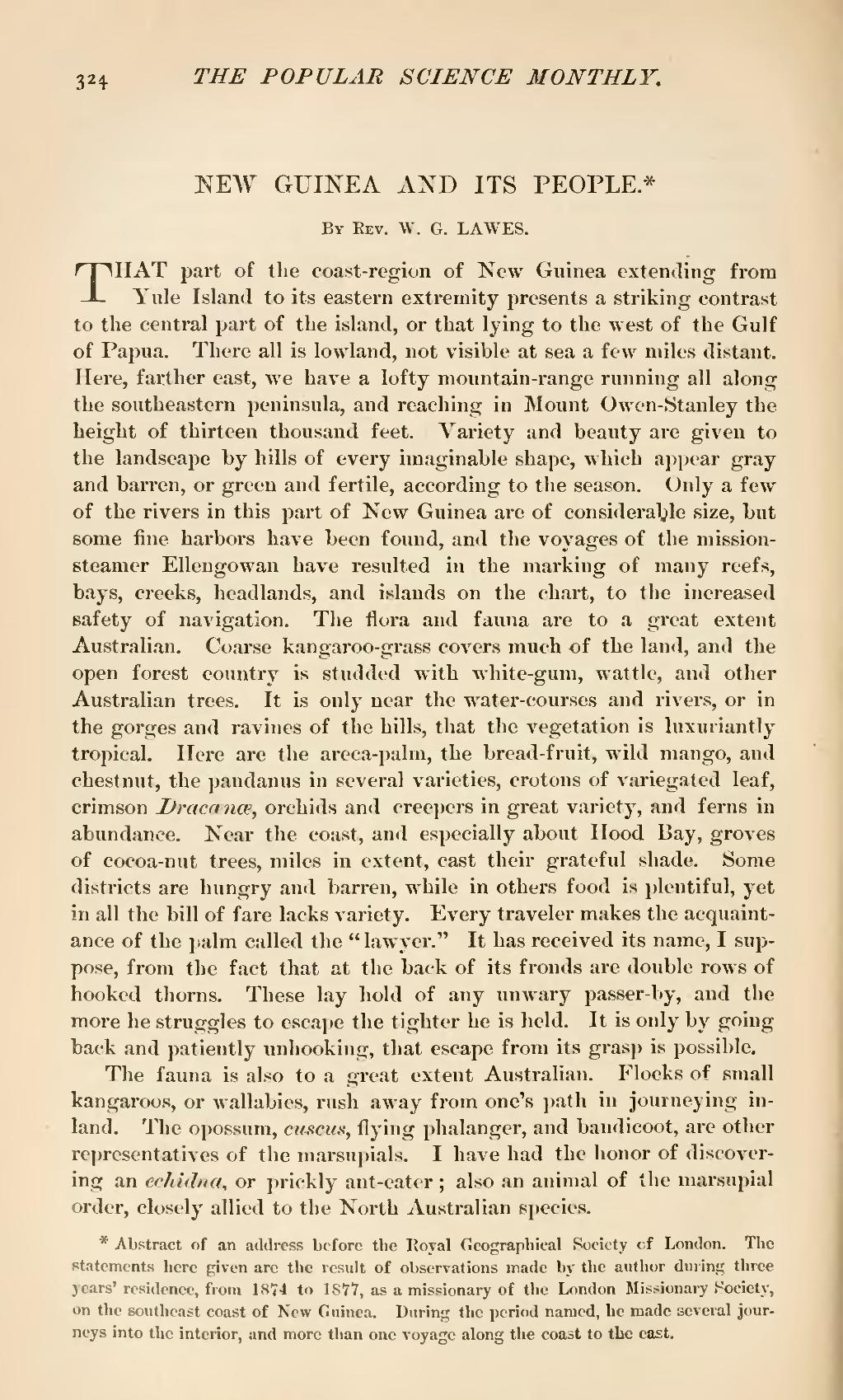| NEW GUINEA AND ITS PEOPLE.[1] |
By Rev. W. G. LAWES.
THAT part of the coast-region of New Guinea extending from Yule Island to its eastern extremity presents a striking contrast to the central part of the island, or that lying to the west of the Gulf of Papua. There all is lowland, not visible at sea a few miles distant. Here, farther east, we have a lofty mountain-range running all along the southeastern peninsula, and reaching in Mount Owen-Stanley the height of thirteen thousand feet. Variety and beauty are given to the landscape by hills of every imaginable shape, which appear gray and barren, or green and fertile, according to the season. Only a few of the rivers in this part of New Guinea are of considerable size, but some fine harbors have been found, and the voyages of the mission-steamer Ellengowan have resulted in the marking of many reefs, bays, creeks, headlands, and islands on the chart, to the increased safety of navigation. The flora and fauna are to a great extent Australian. Coarse kangaroo-grass covers much of the land, and the open forest country is studded with white-gum, wattle, and other Australian trees. It is only near the water-courses and rivers, or in the gorges and ravines of the hills, that the vegetation is luxuriantly tropical. Here are the areca-palm, the bread-fruit, wild mango, and chestnut, the pandanus in several varieties, crotons of variegated leaf, crimson Dracænæ, orchids and creepers in great variety, and ferns in abundance. Near the coast, and especially about Hood Bay, groves of cocoa-nut trees, miles in extent, cast their grateful shade. Some districts are hungry and barren, while in others food is plentiful, yet in all the bill of fare lacks variety. Every traveler makes the acquaintance of the palm called the "lawyer." It has received its name, I suppose, from the fact that at the back of its fronds are double rows of hooked thorns. These lay hold of any unwary passer-by, and the more he struggles to escape the tighter he is held. It is only by going back and patiently unhooking, that escape from its grasp is possible.
The fauna is also to a great extent Australian. Flocks of small kangaroos, or wallabies, rush away from one's path in journeying in-land. The opossum, cuscus, flying phalanger, and bandicoot, are other representatives of the marsupials. I have had the honor of discovering an echidna, or prickly ant-eater; also an animal of the marsupial order, closely allied to the North Australian species.
- ↑ Abstract of an address before the Royal Geographical Society of London. The statements here given are the result of observations made by the author during three years' residence, from 1874 to 1877, as a missionary of the London Missionary Society, on the southeast coast of New Guinea. During the period named, he made several journeys into the interior, and more than one voyage along the coast to the east.
